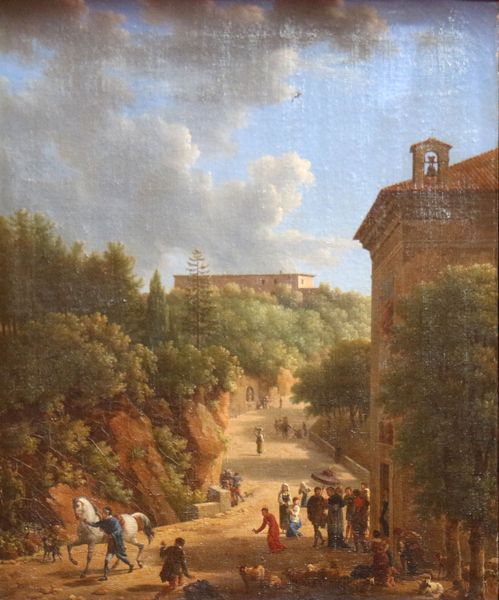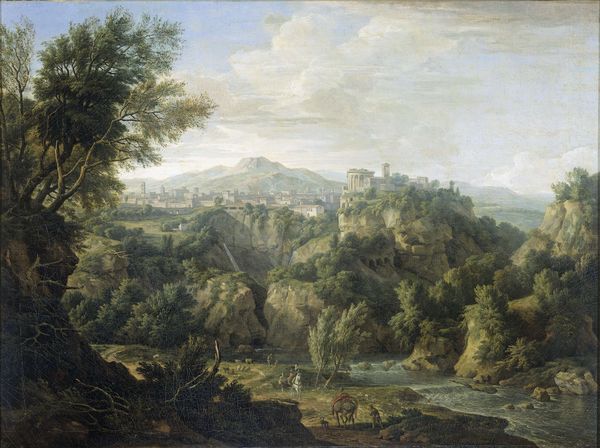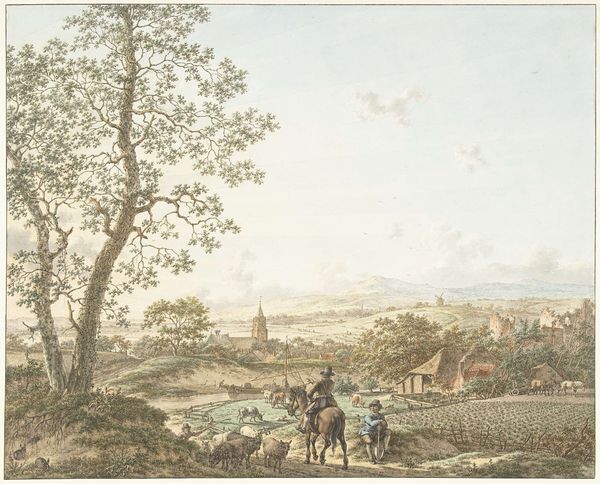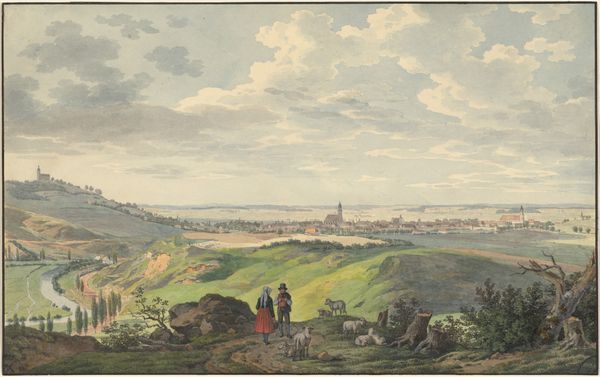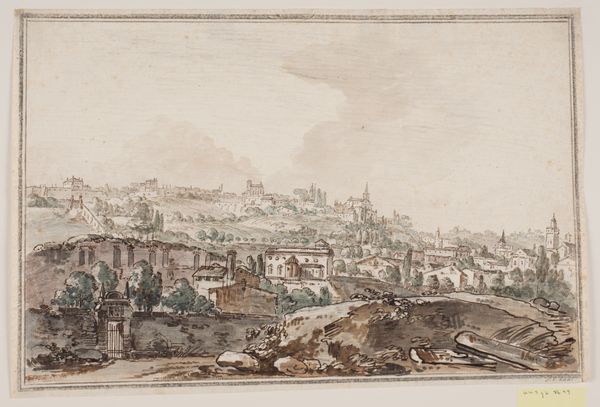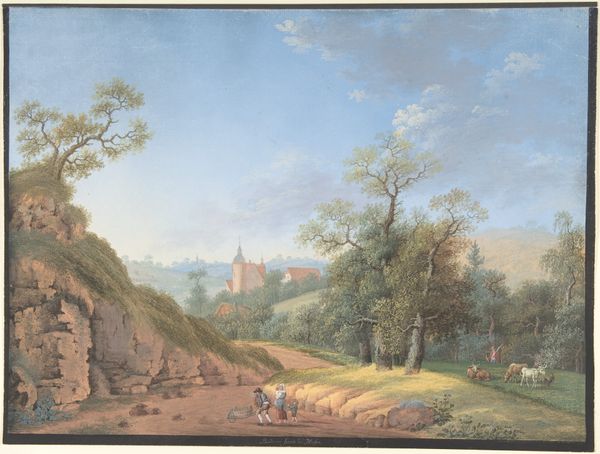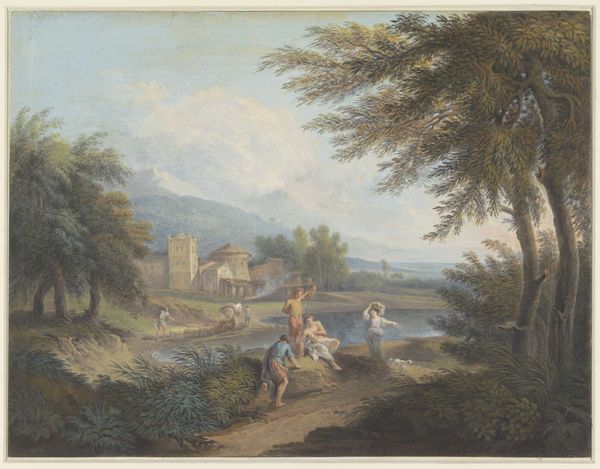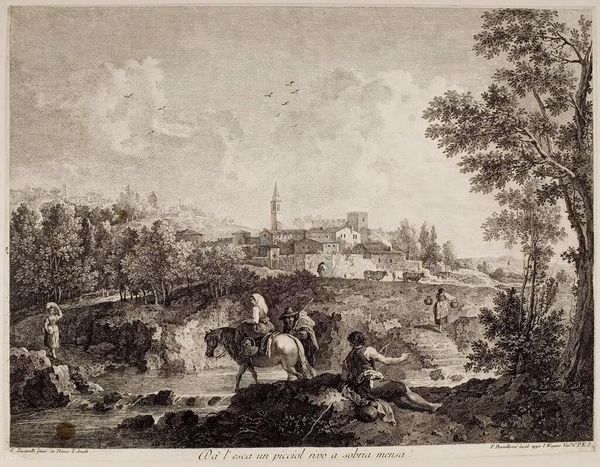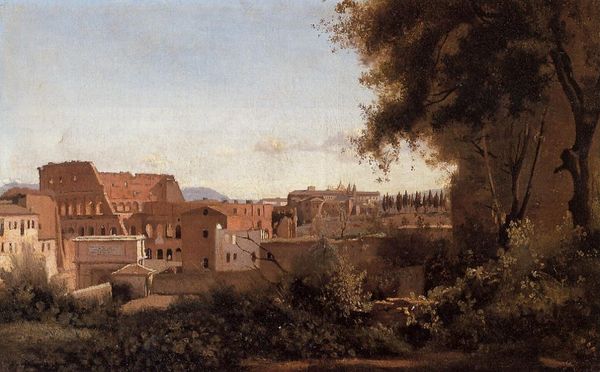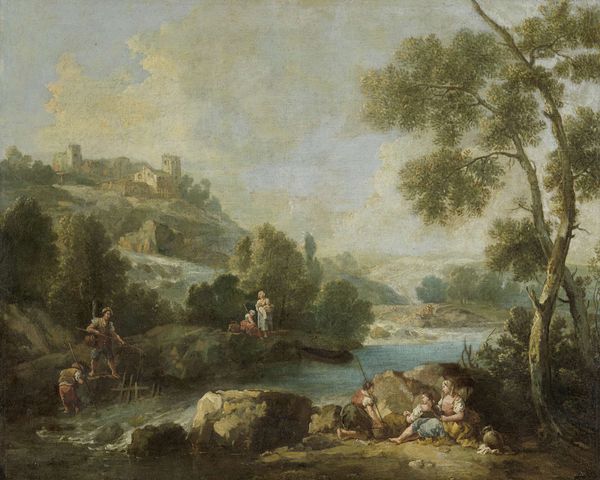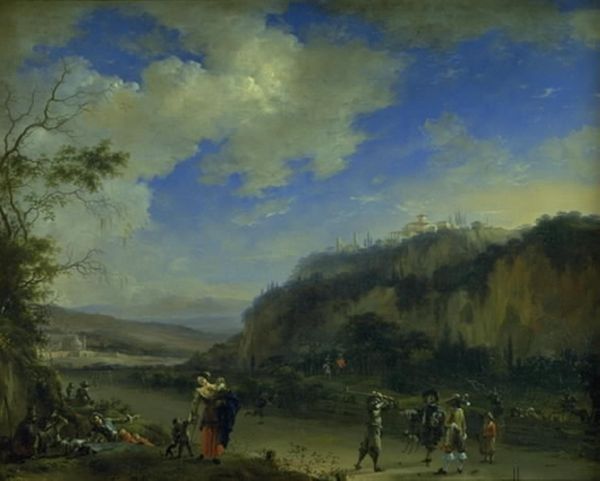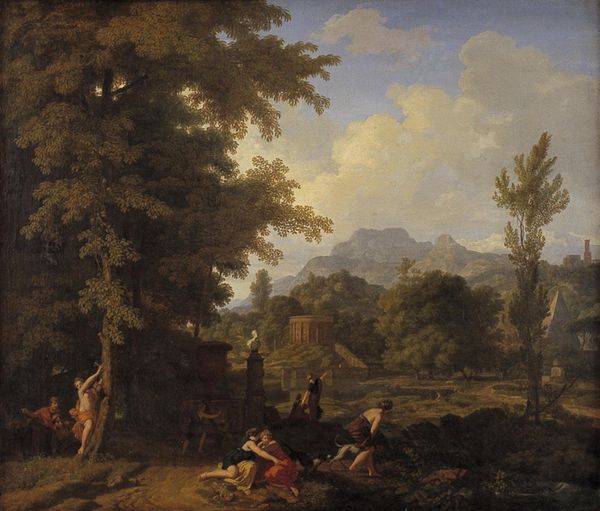
painting, oil-paint
#
painting
#
oil-paint
#
landscape
#
oil painting
#
genre-painting
#
watercolor
#
rococo
Copyright: Public Domain: Artvee
Editor: We're looking at Claude-Joseph Vernet's "Villa at Caprarola," painted in 1746, using oil on canvas. It strikes me as a staged tableau, like everyone's posing. What's your read on this? Curator: Posing, perhaps, but delightfully so! Vernet captures that idyllic 18th-century vision of landscape. The Villa, perched high, oversees a meticulously crafted scene, and it feels more like a theatre set doesn't it? Each figure, each tree, carefully placed. Editor: It definitely feels deliberate. How much of this is reality and how much is artistic license, you think? Curator: Ah, the perennial question! Vernet was commissioned to paint these views, so he likely enhanced the natural beauty to satisfy his patrons. He uses light and shadow to draw our eye around the composition – note how your eye goes from the dark tree on the left up towards the villa, leading your eyes. Did you notice that? Editor: I see it now! So it's less about strict accuracy and more about conveying a mood? Curator: Precisely. It's a celebration of harmonious existence, man coexisting with nature in perfect balance. The impending storm on the right just adds that touch of drama doesn’t it? Do you think it disturbs that feeling of balance? Editor: A little, but I like it. Maybe it suggests that even in paradise, there's a touch of reality. I appreciate the artificiality more, knowing Vernet was intentionally shaping our experience. Curator: Indeed. The artifice becomes part of the art. Editor: Exactly. It's made me think about how landscapes can be more than just pretty scenes; they're statements. Curator: Wonderful! Now I'm seeing it in a completely new way too!
Comments
No comments
Be the first to comment and join the conversation on the ultimate creative platform.
